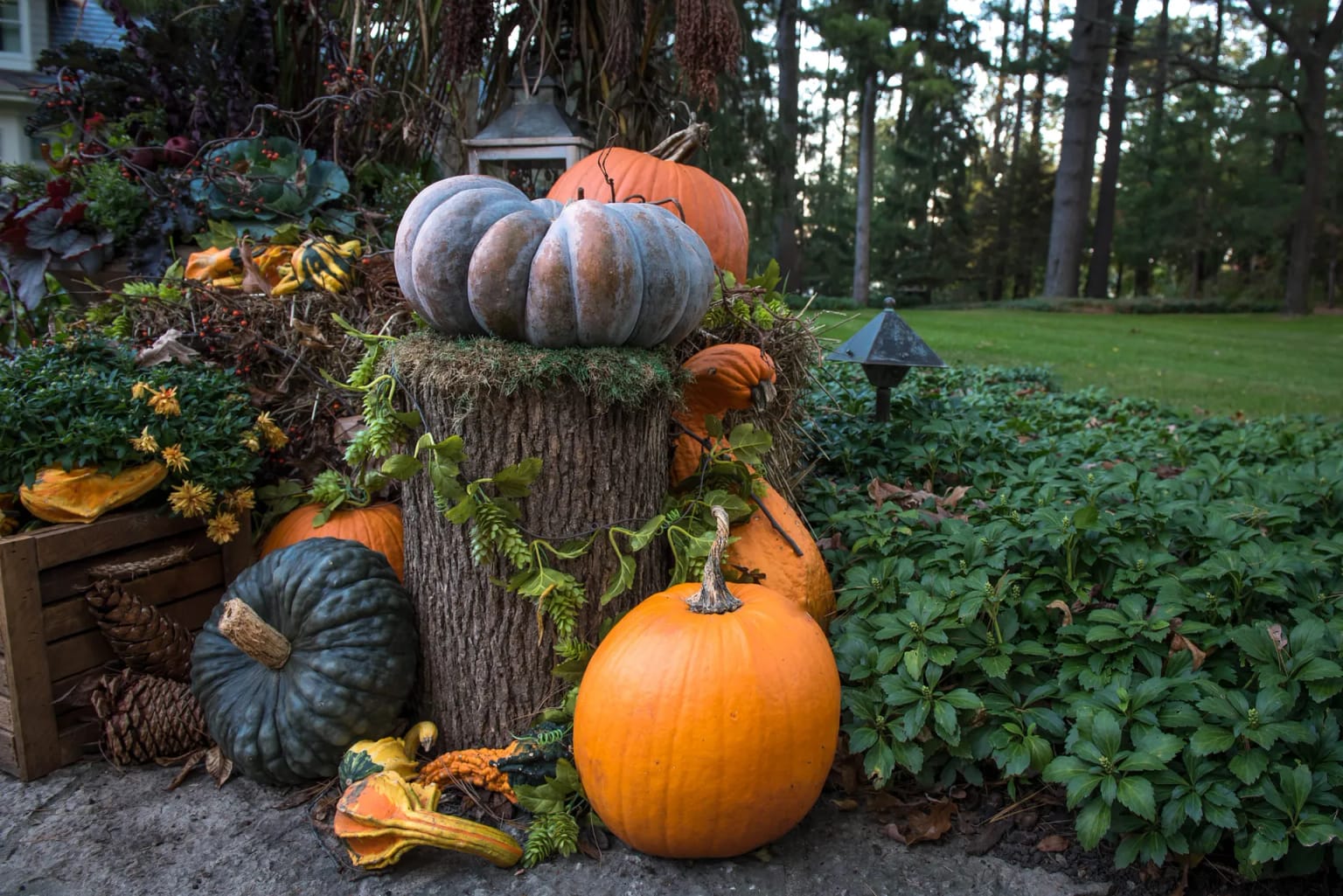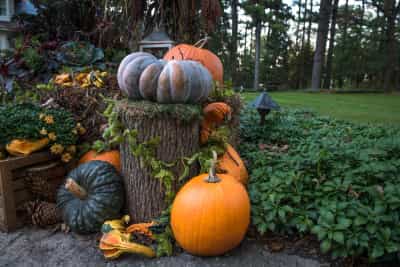Fall Color Secrets Every Wisconsin Gardener Should Know

Fall Color Secrets: Creating Spectacular Autumn Displays in Wisconsin
Wisconsin's fall color season is legendary, drawing visitors from around the world to witness our spectacular autumn displays. While we're blessed with incredible natural beauty, you can enhance and extend the fall color experience in your own landscape with strategic plant choices and proper care.
Understanding Fall Color Science
Why Leaves Change Color: Fall color is the result of complex chemical processes triggered by shorter days and cooler temperatures. As chlorophyll breaks down, other pigments become visible:
- Carotenoids create yellow and orange colors
- Anthocyanins produce red and purple hues
- Tannins result in brown colors
Factors Affecting Color Intensity:
- Temperature fluctuations (cool nights, warm days intensify colors)
- Moisture levels (moderate moisture produces best color)
- Sunlight exposure (sunny locations generally produce brighter colors)
- Soil conditions (slightly stressed trees often color better)
Wisconsin's Native Fall Color Champions
Trees for Spectacular Color:
Sugar Maple (Acer saccharum)
- Color: Brilliant orange, yellow, and red
- Peak: Late September to early October
- Notes: Wisconsin's state tree, reliable performer
Red Maple (Acer rubrum)
- Color: Bright red to orange-red
- Peak: Early to mid-October
- Notes: Adapts to various soil conditions
American Basswood (Tilia americana)
- Color: Clear, bright yellow
- Peak: Mid-October
- Notes: Large heart-shaped leaves create dramatic effect
Black Cherry (Prunus serotina)
- Color: Yellow to orange-red
- Peak: Late September
- Notes: Adds early season color, valuable for wildlife
Quaking Aspen (Populus tremuloides)
- Color: Golden yellow
- Peak: Late September
- Notes: Leaves shimmer in fall breezes
Shrubs for Extended Color:
Sumac (Rhus species)
- Color: Brilliant red-orange
- Peak: Early fall
- Notes: One of the first to change, very reliable
Viburnum (Viburnum species)
- Color: Red to purple
- Peak: Mid to late fall
- Notes: Many species native to Wisconsin
Ninebark (Physocarpus opulifolius)
- Color: Yellow to orange
- Peak: Mid-October
- Notes: Interesting exfoliating bark adds winter interest
Elderberry (Sambucus canadensis)
- Color: Yellow
- Peak: Early fall
- Notes: Provides food for wildlife before color change
Non-Native Fall Color Additions
While native plants should form the backbone of your landscape, some well-chosen non-natives can extend and enhance your fall display:
Outstanding Non-Native Trees:
Norway Maple (Acer platanoides)
- Color: Bright yellow
- Peak: Mid to late October
- Notes: Holds color longer than most maples
Ginkgo (Ginkgo biloba)
- Color: Clear, bright yellow
- Peak: Late October
- Notes: Dramatic color change happens quickly
Sweet Gum (Liquidambar styraciflua)
- Color: Yellow, orange, red, purple (often on same tree)
- Peak: Mid to late October
- Notes: Unique star-shaped leaves
Tulip Tree (Liriodendron tulipifera)
- Color: Golden yellow
- Peak: Early to mid-October
- Notes: Distinctive leaf shape, fast-growing
Shrubs for Accent Color:
Burning Bush (Euonymus alatus)
- Color: Brilliant red
- Peak: Early fall
- Notes: Very reliable color, consider native alternatives
Oakleaf Hydrangea (Hydrangea quercifolia)
- Color: Red to purple
- Peak: Mid-fall
- Notes: Interesting leaf shape, long-lasting color
Designing for Extended Fall Color
Sequence Planning:
Create a progression of color that lasts from early September through November:
Early Fall (September):
- Sumac and Virginia Creeper start the show
- Early-changing maples begin coloring
- Ornamental grasses start developing seed heads
Peak Fall (October):
- Most maples reach peak color
- Oaks begin their slower color change
- Asters and goldenrod bloom
Late Fall (November):
- Oaks display yellow and brown tones
- Ornamental grasses reach full beauty
- Evergreens provide backdrop contrast
Color Combinations:
Harmonious Schemes:
- Yellow and orange maples with golden ornamental grasses
- Red sumac with purple asters
- Mixed maple colors with evergreen backdrop
Contrast Schemes:
- Bright red maples against dark evergreens
- Golden ginkgo with burgundy oaks
- Yellow basswood with red cherry
Maximizing Color in Your Landscape
Plant Placement Strategies:
Background Plantings:
- Use evergreens as backdrop to highlight deciduous color
- Plant larger trees where they can be viewed from multiple angles
- Consider sight lines from windows and outdoor seating areas
Foreground Interest:
- Use smaller trees and shrubs for close-up color
- Include ornamental grasses for texture and movement
- Add late-blooming perennials for flower color
Seasonal Succession:
- Plan for color changes throughout fall
- Include plants with interesting bark or structure for winter
- Consider berry-producing plants for wildlife and color
Maintenance for Better Color:
Proper Watering:
- Maintain consistent soil moisture during dry spells
- Avoid overwatering, which can delay color change
- Deep, infrequent watering is best
Fertilization Timing:
- Avoid late-season nitrogen fertilization
- Apply phosphorus and potassium in early fall
- Organic fertilizers provide gentle, sustained nutrition
Pruning Considerations:
- Prune for structure in late winter or early spring
- Remove dead or damaged branches any time
- Avoid heavy pruning in fall
Ornamental Grasses: The Unsung Heroes of Fall
Ornamental grasses provide incredible fall and winter interest:
Native Options:
- Little Bluestem (Schizachyrium scoparium) - Orange to red fall color
- Prairie Dropseed (Sporobolus heterolepis) - Fragrant orange fall color
- Switch Grass (Panicum virgatum) - Yellow to orange color
Non-Native Additions:
- Feather Reed Grass (Calamagrostis × acutiflora) - Tan seed heads
- Fountain Grass (Pennisetum alopecuroides) - Fluffy, tan plumes
- Miscanthus (Miscanthus sinensis) - Silver to tan plumes
Fall Color Care Calendar
Late Summer (August):
- Ensure adequate watering during dry periods
- Begin reducing nitrogen fertilization
- Plan fall planting projects
Early Fall (September):
- Stop fertilizing trees and shrubs
- Begin fall cleanup, but leave beneficial debris
- Plant new trees and shrubs for next year's color
Mid Fall (October):
- Enjoy peak color season!
- Take photos to document successful combinations
- Plan additions for next year
Late Fall (November):
- Leave ornamental grass seed heads for winter interest
- Protect young trees from winter damage
- Plan hardscape projects for winter months
Extending the Season
Late-Season Bloomers:
Add plants that flower during fall color season:
- New England Aster - Purple flowers in September
- Goldenrod - Yellow flowers in fall
- Sedum - Pink or red flowers in late fall
- Chrysanthemums - Various colors through frost
Berry and Fruit Interest:
Include plants with colorful fruits:
- Serviceberry - Red to purple berries
- Cranberry Bush Viburnum - Bright red berries
- Winterberry Holly - Red berries persist through winter
- Rose Hips - Orange to red fruits on native roses
Common Fall Color Challenges
Poor Color Development:
Causes:
- Too much nitrogen fertilization
- Inconsistent watering
- Insufficient sunlight
- Young plants (color improves with age)
Solutions:
- Adjust fertilization practices
- Improve soil drainage if needed
- Consider relocating shade-tolerant plants
- Be patient with young plantings
Early Leaf Drop:
Causes:
- Drought stress
- Disease issues
- Insect damage
- Air pollution
Solutions:
- Maintain consistent soil moisture
- Proper plant selection for site conditions
- Integrated pest management
- Choose pollution-tolerant species for urban areas
Professional Planning for Fall Color
Creating a landscape with spectacular fall color requires careful planning and plant knowledge. Professional landscape designers can help by:
- Analyzing your site for optimal plant placement
- Selecting appropriate species for your specific conditions
- Designing for year-round interest with fall color as a highlight
- Planning installation timing for best establishment
- Providing ongoing care guidance for optimal color development
Enjoying Wisconsin's Fall Heritage
Fall color is one of Wisconsin's greatest natural treasures. By thoughtfully incorporating color-producing plants into your landscape, you can extend and enhance this spectacular season while creating habitat for wildlife and adding year-round value to your property.
At LandWorks, we understand the unique challenges and opportunities of Wisconsin's growing conditions. Our team can help you design and install a landscape that celebrates our state's incredible fall color tradition while meeting your specific needs and preferences.
Ready to create your own fall color masterpiece? Contact us today to discuss how we can help you design a landscape that showcases the best of Wisconsin's autumn beauty.

Work With Us
Ready to transform your outdoor space? Contact LandWorks today to schedule a consultation and take the first step toward your dream landscape.